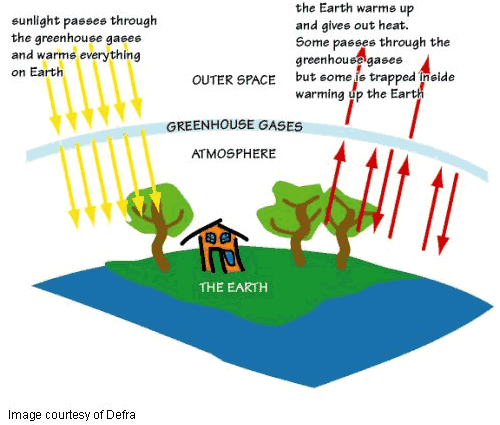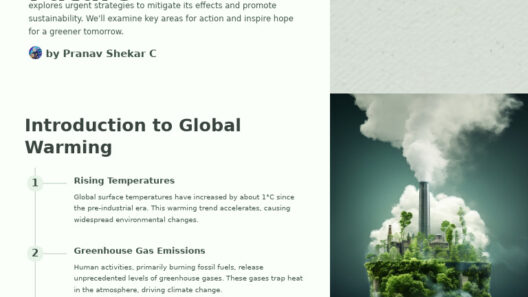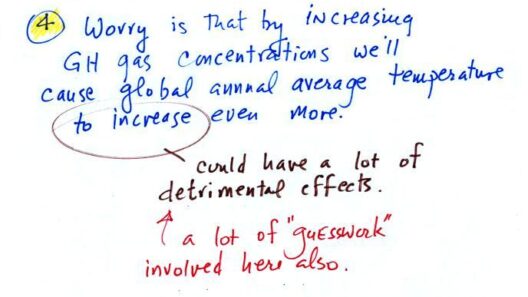The greenhouse effect is a critical phenomenon that sustains life on Earth by regulating its temperature. This natural process involves the absorption of infrared radiation by certain gases in the atmosphere, which then re-radiate the energy, effectively creating a thermal blanket around the planet. It is essential for maintaining habitable conditions; however, anthropogenic activities have intensified this effect, leading to significant environmental consequences.
The primary gases responsible for the greenhouse effect include carbon dioxide (CO2), methane (CH4), nitrous oxide (N2O), and water vapor. Each of these contributors plays an integral role, albeit in varying capacities. Carbon dioxide, the predominant greenhouse gas, is emitted through combustion of fossil fuels, deforestation, and industrial processes. Methane, while less abundant, possesses a substantial warming potential, being emitted from agriculture (especially livestock), landfills, and natural gas systems. Nitrous oxide, though fewer in total emissions, arises from agricultural and industrial activities, as well as burning fossil fuels.
The greenhouse gases function similarly to the glass of a greenhouse: they allow sunlight to enter but trap some of the heat that is radiated back into the atmosphere. Without this natural greenhouse effect, Earth’s average temperature would plummet to approximately -18 degrees Celsius (0 degrees Fahrenheit), rendering our planet inhospitable for most life forms. However, the challenge emerges when human activities significantly amplify the concentration of these gases in the atmosphere, leading to what is termed the enhanced greenhouse effect.
The enhanced greenhouse effect is largely driven by the indiscriminate burning of fossil fuels, extensive deforestation for agriculture or urban development, and various industrial processes. As a result, it has led to an observable increase in global temperatures, commonly referred to as global warming. The ramifications of such warming are profound, extending beyond temperature increases to encompass a myriad of environmental changes.
One alarming consequence is the alteration of weather patterns. Increased global temperatures lead to an intensification of the water cycle, resulting in more extreme weather events. Regions that were once temperate may experience pervasive droughts, while others may suffer from unprecedented flooding. Hurricanes and typhoons are predicted to grow in intensity, posing increased risks to coastal communities.
Another critical outcome of elevated global temperatures is the melting of polar ice caps and glaciers, which directly contributes to rising sea levels. The loss of ice in Greenland and Antarctica, as well as the accelerating melt rates from glaciers worldwide, threatens coastal ecosystems and human settlements. By the century’s end, projections suggest that sea levels could rise by as much as a meter (3.3 feet) or more, displacing millions of people and inundating crucial habitats.
Moreover, the alteration of ecosystems is a pressing concern. As species struggle to adapt to rapid climate shifts, biodiversity declines. Many plants and animals find their habitats unsuitable for survival, leading to increased extinction rates. Coral reefs, often termed the “rainforests of the sea,” are particularly vulnerable to thermal stress and acidification, resulting in widespread coral bleaching that disrupts marine biodiversity and the livelihoods of communities reliant on fishing and tourism.
In addition to ecological impacts, human health is also jeopardized. Increasing temperatures can exacerbate air quality issues, leading to respiratory problems, cardiovascular diseases, and heat-related illnesses. Furthermore, the proliferation of disease vectors, such as mosquitoes, due to changing climatic conditions can lead to the spread of infectious diseases into new regions, posing significant public health challenges.
Urgent action is essential to mitigate the detrimental impacts of the enhanced greenhouse effect. Transitioning to renewable energy sources, such as solar, wind, and hydroelectric power, can drastically reduce greenhouse gas emissions. Expanding energy efficiency in industrial practices, transportation, and residential buildings can also play a substantial role in emission reduction. Moreover, protecting and restoring forests can serve as a natural carbon sink, sequestering CO2 and thereby diminishing atmospheric concentrations.
Furthermore, adopting sustainable agricultural practices is vital in reducing emissions from this sector. This includes responsible livestock management, promoting plant-based diets, and employing advanced farming techniques that enhance soil health. Educating communities about the importance of reducing waste and promoting recycling can also contribute to a more sustainable circular economy.
Ultimately, understanding the greenhouse effect and recognizing its harmful amplifications allow for informed decision-making both at the individual and systemic levels. Advocating for policy changes and supporting organizations dedicated to environmental preservation is crucial. Each small action, when multiplied across communities, leads to meaningful change in the collective effort to combat climate change.
In conclusion, the greenhouse effect serves as both a vital component of Earth’s climate system and a looming threat due to human-induced enhancements. Addressing the root causes of climate change requires a concerted effort from all sectors of society to ensure the sustainability of our planet for future generations. Collective awareness and actions are necessary to reverse damage and foster ecological resilience.








